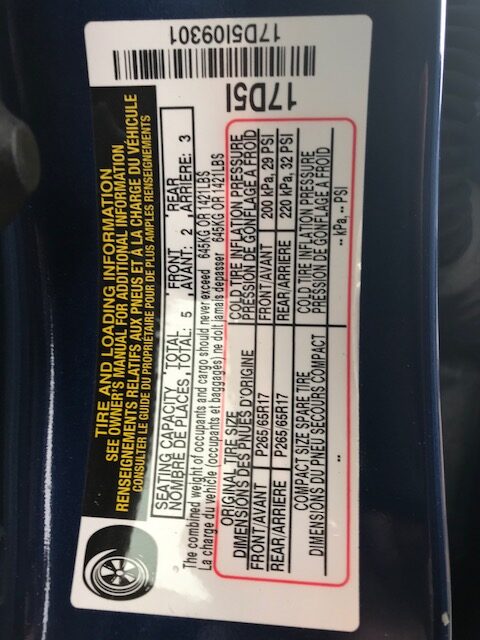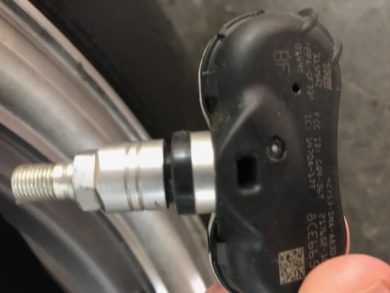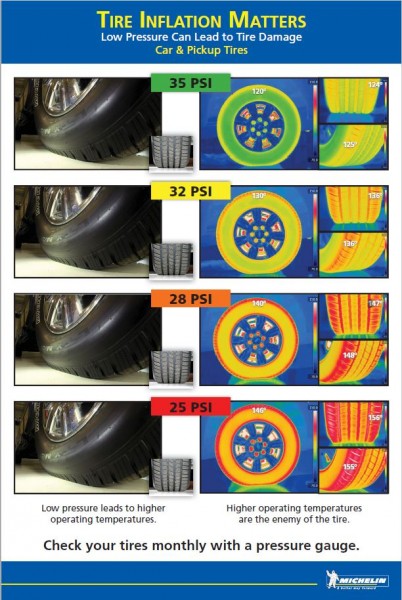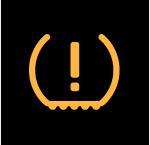Tire Pressure Monitoring Repair
Why is my TPMS Light on?
Your Tire Pressure Monitoring System has detected there’s problem with one or more of your tires being low on air. The Tire Pressure Monitoring System warns you of a low tire but not why it’s low. It can be a slow leak from the valve stem, leaking around the wheel to tire contact area or something puncturing the tire itself. If your TPMS light flashes for about 90 seconds and then stays on, the TPMS system is not working properly and needs to be brought into American & Import Auto Repair for service.
Why does my TPMS light come on in cold weather?
Cold weather makes the air in your tires denser while the car is parked. The air and moisture in the tire can actually lower the pressure. The TPMS light is more likely to come on if one of the tires is slightly under inflated. I recommend visually inspecting all the tires for a flat and if it looks ok then drive the car and warm up the tires and the light should go out (friction creates heat and the tire pressure will rise). Even with TPMS it is a good idea to manually check your tires once a month or bring it by 3832 West Market Street Johnson City, TN 37604 and we can check your tires for your peace of mind.

Door Jam is where you find the correct tire pressure for your vehicle
Does warm weather affect my tires as well?
Hot weather raises the tire pressure but this doesn’t usually make the TPMS light come on. There is a relationship between the outside temperature and the tire pressure in the tires. The hotter the temperature the more important tire pressure is. A tire that is under inflated by just 5 pounds per square inches can cause major problems. The under inflated tire produces more heat because of the friction and can break down the rubber compounds in the tire. Under inflated tires are like a piece of metal being bent hundreds of times and eventually it just breaks and the tire have a blowout.
Can I just wait till the TPMS light comes on?
The quickest and Safest answer is NO. By the time the light comes on it might already be unsafe to drive. Manually checking your tires regularly (monthly) is the best practice (or let us check it for you). Depending how heavily your vehicle is loaded and how under inflated your tires are can make it very unsafe to operate especially at higher speeds.
Where can I find the correct tire pressure for my vehicle?
Open your driver’s door and it should be in the door jam area or in the owner’s manual.
Tire Pressure Monitoring System explained
TPMS is a real time electronic system that keeps track of the exact amount of air in your tires. Tire Pressure Monitoring Systems are put on vehicles to avoid accidents, increase fuel economy and help tire wear by recognizing a low tire condition and making you aware of it. Under inflated tires waste 2 billion gallons of fuel a year. A study in 2012 found that 80% of vehicles on the road have at least one under inflated tire. Tire Pressure Monitoring Systems became standard in 2008 under the TREAD Act passed by Congress. A TPMS light is required to come on if a tire is 25% lower than the other which is well into the problem zone for driver safety. For every 10% of under inflation on your tires your fuel economy goes down 1%.
Causes for your TPMS Light being on
- Low Tire or Tires
- Bad Sensor
- Damaged wheel sensor (potholes)
- Low wheel sensor battery
- Bad Module
- Loss of Signal
- Wheel Bearing Bad
- Spare Tire Low
- Car Battery Disconnected or Bad

This is what a replacement TPMS sensor looks like and the new battery is inside the sensor.
Direct and Indirect TPMS
Direct TPMS
Measures the tire pressure in each wheel with a sensor (in the wheel or just outside it). Then the information is relayed back to a module to collect all the data.
How long should TPMS batteries last?
Some use batteries in the wheel that eventually need to be replaced typically every 5 to 7 years or 60,000 to 80,000 miles but some last longer. This is the most accurate TPMS system.
Indirect TPMS
Measure the pressure using wheel rotation speeds and other sensors (wheel speed sensors for ABS Anti-lock Braking Systems) outside the wheel to monitor the tire pressure. It doesn’t actually measure the actual tire pressure. The accuracy with this isn’t as exact as direct TPMS.
Maintenance and Issues of TPMS
When the sensors are made in with the valve stem (and aluminum) it sometimes has a problem with corrosion and need to be replaced.
If you put tire sealant in to “fix” a tire, it can cause problems with the TPMS sensor (some claim it doesn’t but we have seen it first hand). The government has a tire rating lookup if you are researching tires.
The BEST TPMS System
The best TPMS system is YOU and manually checking your tires once a month. If not you then bring it by and we will check it for you for FREE! We want you to be SAFE!
Our expert mechanics have the knowledge to service and repair even the most challenging auto problems on all makes and models of domestic and import vehicles. We use the latest technology to assess the situation and offer you alternatives. We guarantee all of our work and know you’ll be happy with the outcome. Stop in at 3832 West Market Street Johnson City, TN 37604 give us a call at 423-913-3111 or text 423-390-8549 to let us know how we can help you!
Service area: Johnson City | Jonesborough | Gray | Telford | Chuckey | Elizabethton | Erwin | Fall Branch | Greenville | Kingsport | Limestone | Mosheim | Mountain Home | Piney Flats
Zip codes 24210, 37618, 37620, 37641, 37643, 37644, 37650, 37656, 37657, 37615, 37743, 37658, 37660, 37681, 37818, 37684, 37686, 37687, 37690, 37692 37601, 37604, 37659
Here is a chart that shows how critical properly inflated tires are for you and your passengers safety.


